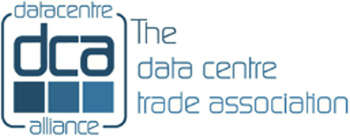GDPR & your privacy.
Your privacy as a member is important to us. Recently, rules surrounding privacy have changed, so we have created this manifest for you to read and accept.
It is not possible for you to be classed as an authentic member of the DCA unless you accept the terms, that includes but is not limited to the GDPR statement below.
Please read the privacy policy here.
Keysource launches new 'Green' Product

Leading datacentre specialist Keysource has launched a new service designed to help companies to optimise the energy efficiency of their datacentres, saving money and reducing carbon. EOS (Energy Optimisation Study) will also provide relevant and accurate data that can be utilised for mandatory regulatory reporting requirements such as SECR (streamlined energy and carbon reporting) and help companies to avoid costly penalties.
The study will include an understanding of the facility utilisation and required operation along with an assessment of the power and cooling infrastructure. Opportunities to optimise will be identified along with their savings and return periods in order to identify recommendations which suit the lifecycle of the facility and the IT within it.
It follows a recent survey by the uptime institute that reported an industry average PUE for 2019 amongst respondents was 1.67 which suggests that improvements in datacentre facility energy efficiency have flattened out and even deteriorated slightly in the past two years. The survey suggests that making small low cost amendments and optimisation with certain infrastructure can in some cases achieve energy savings of up to 20-30%.
Jon Healy, Managing Executive at Keysource, said: “At Keysource we are committed to supporting our clients’ sustainable goals, whatever their drivers. All eyes are on the corporate green agenda and it is imperative that businesses take the opportunity to reduce their carbon footprint, among other planet saving efforts. The Keysource EOS will give companies the information they need to make informed decisions and will identify real cost benefits, whist maintaining their business critical infrastructure.”
+ 44 (0)845 873 4587
[email protected]


